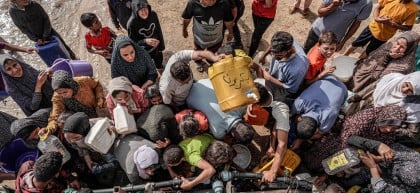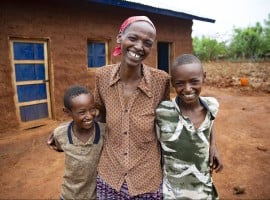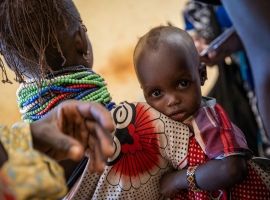
Read our 2023 annual report

Knowledge Hub
Two devastating earthquakes hit Nepal in the spring of 2015. Concern was there within 48 hours. Here’s what happened next.
On April 25, 2015, a 7.8-magnitude earthquake struck Nepal — the worst the country had seen in eight decades. With an epicentre in Gorkha (about an hour from the capital of Kathmandu), the quake had a devastating impact, killing nearly 9,000 people, injuring over 22,000, and displacing 2.8 million. It also triggered a series of aftershocks, including a major 7.3-magnitude tremor near Mount Everest a few weeks later.
Concern had last worked in Nepal in 2010. Despite the five-year gap, we were able to return to the country and begin an emergency response within three days. Ten years later, we take a look back at that response and how its impact continues to be felt in the communities where we worked.
The 50 seconds that changed everything
“The kitchen disappeared before my eyes,” Swechnya Tamrakar told us in April 2015. A 23-year-old student at the time, she was studying at home in Lalitpur, a city in Kathmandu Valley, when, shortly before noon, the cupboards started to shake violently. Her parents, who had been working in the ground floor shop over which their home sat, stood on the street and watched the house collapse with their daughter inside.

Fortunately, when the ground stopped shaking, Swechnya was able to escape through the back staircase, which had remained intact, and found a door that wasn’t jammed. Millions of Nepalese have stories like this from 10 years ago, and hundreds of thousands have stories that ended far more tragically.
The earthquake on 25 April was shallow, located about five miles under the earth’s surface, meaning it caused much more damage than one that originated further below ground. It lasted about 50 seconds and its tremors were felt as far away as Pakistan and Bhutan. The impact was devastating, but could have been worse: 25 April, 2015 was a Saturday, meaning that children were not in school and most businesses were closed. It was also midday, meaning that many people in rural areas of the country were working outside, less likely to be trapped under rubble.
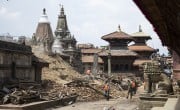

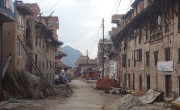
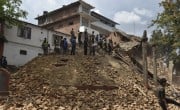
Generations reduced to rubble
Still, it was the worst earthquake Nepal had seen since 1934. Dozens of families Concern met and worked with in the spring of 2015 described seeing their homes vanish in front of them.
In the village of Kukhuratar, two hours east of Kathmandu, 72-year-old Krishna Prasad Sapotka had been putting the finishing touches on a new home he had built by hand when the earthquake struck. Decades of work were reduced to a pile of mud, sticks, and stone. In another village in Dolakha district, Ratna Maya Khatri crouched behind two houses to survive. Then 88, she had distant memories of the 1934 earthquake which had destroyed her family’s home. It was a haunting moment of history repeating itself.
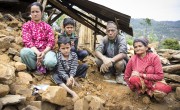
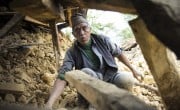
Eventually, the tallied numbers would reveal that 5.4 million people in Nepal (roughly one out of every five residents) were affected by the earthquakes, whose total damage exceeded $7 billion USD. Of the country’s 77 districts, 31 were significantly affected, with nearly 900,000 homes destroyed or damaged — alongside infrastructure, schools, hospitals, clinics, and historical and cultural monuments.
“I was struck by the amount of devastation,” recalls Reka Sztopa, who is now Concern’s Regional Director West Africa & Sahel. In 2015, she was part of Concern’s initial emergency response team in Nepal, working in Dolakha. “Certain areas had been completely flattened, whereas others seemed untouched.”
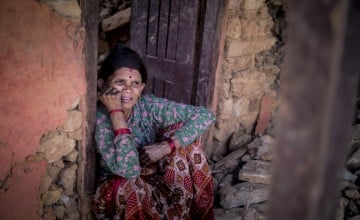
Concern in Nepal: a recent history
The shallowness of the earthquake contributed to its high levels of destruction. However, the impacts were also more devastating for many Nepalese because of the country’s then-recent history, having emerged relatively recently from a civil war that lasted from 1996 to 2006.
Concern had worked in Nepal between 2005 and 2010, responding to the humanitarian crises fueled by the conflict. We had worked through national partners in that response, and turned over operations to them after five years with the peace process well underway. However, a setback like the earthquake carried even more impact among families still trying to recover from the losses that came with a decade of violence and political instability.
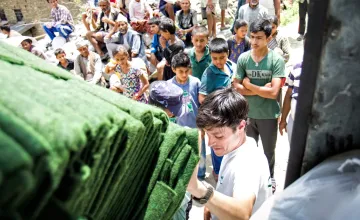
“When the scale of need is at such an amount that it overwhelms the international humanitarian community’s ability to respond, we step in,” says Concern US’s Vice President of Programmes, Kirk Prichard (who was also in Nepal in the spring of 2015).
Our ongoing relationships with local organisations, including Rural Reconstruction Nepal (RRN) and Nepal Water for Health (NEWAH), and our experience in delivering humanitarian aid to parts of the country that were especially hard to reach, made it easy for us to pick up where we had left off and make a difference among key communities.
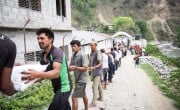

Picking up where we left off
Concern mobilised within 48 hours of the initial quake, and the first members of our response team arrived in Kathmandu on the evening of April 28, landing in an airport flooded with fellow humanitarian workers, search-and-rescue teams, and other frontline responders.
There were hundreds of aftershocks in the weeks that followed the first earthquake, as well as landslides triggered by those aftershocks. “Quite a few times we’d be in the middle of meetings and have to run out into open areas,” Sztopa recalls.

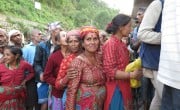
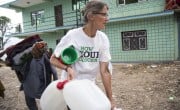
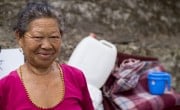

Regine Kopplow, now a Senior Global Technical Advisor for Livelihoods with Concern, was another member of that first response team, having worked as a CMAM Advisor in Nepal from 2008 to 2010. It was the partnerships we made in that time, she recalls, that enabled us to respond quickly and appropriately.
“From hearing the news about the earthquake to being able to account for all former Concern staff, it all happened on the same day because of the network we had,” she says. That network also allowed us to re-enter Nepal without missing a beat. “We knew each other, we trusted each other… it was a good example of how investing in partnerships helps now, but may also help in the future.”
Working with both RRN and NEWAH amid constant aftershocks, Concern quickly determined where assistance was needed most, and what was needed. In the districts of Dolakha and Sindhuli, we began sourcing and distributing over 14,000 non-food item kits, also known as NFI (rhymes with “jiffy”) kits, which included essentials like tarpaulins, sleeping mats, blankets, hygiene kits, and jerry cans for collecting water. This in itself became a challenge with so many markets in Nepal shuttered and roads unable to be used.
“There was no food, no materials, nothing coming in,” adds Kopplow. Knowing the needs, Sztopa recalls the frustration of wanting to move quickly.
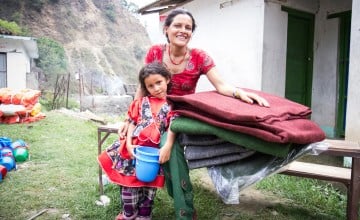
“We have something to smile about now”
The wait, however, was worth it. Concern’s “measure twice, cut once” approach to emergency response meant that we were able to account for several areas of essentials in one distribution, while also sourcing quality products that would hold up against the elements.
“No one has given us this many items,” Phool Maya Dhungana, said after a distribution in the town of Talamarang, Sindhupalchok district. Like many families, hers had been sleeping outside in the aftermath of the earthquake out of fear of aftershocks. “Now we can have a good sleep,” she said of the blankets, carpet, and tarps they received as part of their package.

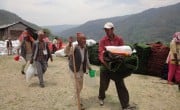
Chameli Darji, a neighbor of Dhungana’s, added that it was rare to see relief supplies make it to their remote part of the district. “People in town get aid really quickly. But the really needy people in the village don’t get it.”
Hearing variations on this was also something that has stuck with Sztopa over the last decade: “At one of the distributions, an elderly woman came up to me and said she had lived through many disasters in her life, but this was the first time she had received assistance.”
In another village in Sindhupalchok, one resident said the Concern distribution had been the first time the village was all together in one place, allowing them to know who had survived. “We have something to smile about now,” she said.
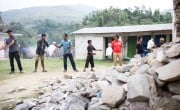
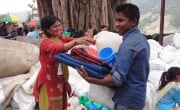
The second earthquake
In the early afternoon of May 12, a second earthquake struck with a magnitude of 7.3 and an epicentre close to Mount Everest. Despite its official classification as an aftershock, it was as devastating as the initial earthquake, if not more for what it signified.
“The real damage was what happened from the second earthquake,” Kopplow recalls. “The buildings that were somehow still okay after the first collapsed after the second. People were really panicking: The shock was over, they had survived, and then this second one comes shortly after? Many people were really traumatised after that.”
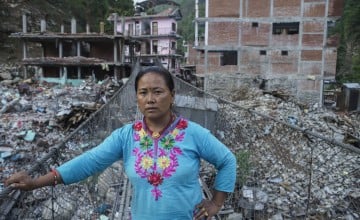
“All our work was swept away in one day,” said Sua Shoma Maya Tamang a few weeks after the May earthquake. “We had a good life before the earthquake.” Tamang and her family had survived the first earthquake, losing only one goat and reopening their hotel after just a week. The May 12 earthquake, however, killed her son and levelled the hotel.
“The aftershocks seemed to be decreasing and the hotel was doing well. People were saying another earthquake won’t come,” she said. “The next day the earthquake destroyed it all.”
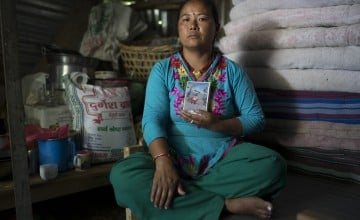
Carrying on
Through all of this, Sztopa remembers how the teams that Concern worked with — both employees of our local partners and Nepalese nationals hired by Concern for the response — were able to balance their own trauma and panic with the work at hand. Many didn’t have emergency response experience at this scale, and had also lost their own homes and resources.
“Their strength and resilience and ability to stay focused on the work while at the same time being impacted by the same thing was remarkable,” she says.
For many involved in our response, both as team members and programme participants, the next hurdle to clear was monsoon season, which in Nepal begins in June. Farmers worked quickly to recover what could be salvaged of their harvests. Families, many using reconstruction kits that Concern helped to source, built temporary shelters.
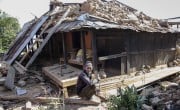
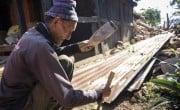
Building back better
After the initial weeks, the news crews moved on but millions of Nepalese had just begun to rebuild their lives. Even at the one-month mark, when Anne-Marie McCarthy (then Concern’s Head of Emergency Support Systems) arrived in Nepal, the feeling had been that the international attention had moved on “but in Nepal the memory of the earthquake [was] very present.”
Concern’s frontline response team left, but we made a commitment to the Nepalese government and people to stay for three years in order to restore damaged infrastructure, recover lost livelihoods, and reduce the risks that came with likely future disasters. Long-term staff arrived to oversee these extended recovery efforts, which included building latrines, rehabilitating water supply systems, and improving schools. We called the project BREAC.
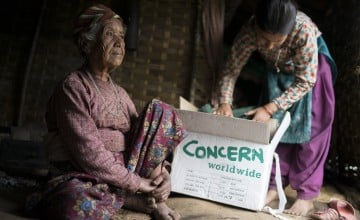
The BREAC-ing point
Building Resilience in Earthquake Affected Communities focused on long-term recovery and disaster risk reduction strategies to help communities better mitigate the risks of future earthquakes and other disasters.
We worked with local schools to rebuild in a way that would make them earthquake-resistant, reducing parents' fears of sending their children to class while also designating the buildings as focal points for emergency preparedness and response in communities. We continued to improve access to safe drinking water, safe disposal of waste, and sound hygiene practice, and worked with the most vulnerable families to improve both access to local markets and food security, enabling a swifter recovery.
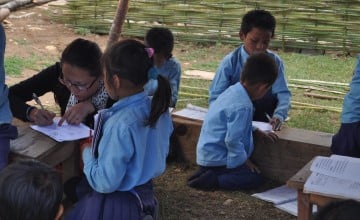
This work spread out across five of the most underserved districts and provided job training and support to community members, nearly doubling incomes within our target communities by the end of the project and increasing purchasing power by 14 percentage points. We also nearly doubled the improvement in access to and use of local sanitation facilities.
We also continued what we had begun in our initial response: prioritising the hardest-to-reach communities. This remains one of our proudest moments in Nepal. “No organisation was willing to work in this place. We have many natural resources, but the only thing not in our favour is the remoteness and no access to good roads,” said one PTA president in Gorkha.
“Despite those circumstances, Concern Worldwide came here.”
Help us prepare for the next emergency
Part of the success of Concern’s response to the 2015 earthquake in Nepal was thanks to generous supporters who rose to the occasion. While we had several funding partners, a large amount of our funding for our multi-year response came from everyday donors who put €10, €50, or €100 towards our appeal.
You can help Concern do more, either by contributing to one of our current emergency responses or to our general fund that supports our work in 26 countries and territories around the world.
